Most project teams are skilled at playing defense. They build plans to mitigate threats, prevent delays, and protect their original goals. But focusing only on what could go wrong means missing the flip side of uncertainty, where real competitive advantages are found.
This is the world of positive risk, where teams actively look for opportunities to deliver exceptional results. With AI-powered project management platforms, it’s now easier to uncover patterns and signals you might otherwise miss. The goal is to build a systematic process for exceeding expectations, not just meeting them.
In this article, you’ll learn how to turn risk management into a strategic advantage. We’ll explore the key differences between positive and negative risks, common examples you can find in your own projects, and 5 strategies to capture these opportunities.
Try monday work managementKey takeaways
- Positive risks can improve your project’s timeline, budget, or quality — but only if you have a plan to take advantage of them.
- Most teams miss valuable opportunities because they focus only on preventing problems, not on actively pursuing beneficial uncertainties that could exceed expectations.
- Follow 6 systematic steps: build an opportunity register, assign owners, analyze impact, create action plans, monitor progress, and document lessons learned for future projects.
- Focus on 4 main opportunity types: schedule acceleration, cost reduction, scope enhancement, and quality improvements — each of which requires different monitoring and response strategies.
- Use monday work management’s customizable workflows, automated alerts, and AI-powered insights to track both threats and opportunities in one system, ensuring positive risks get the attention they deserve.
Positive risk in project management: How to turn uncertainty into opportunity
Positive risk is an uncertain event that could benefit your project if it occurs, highlighting a crucial element of project risk management. This means opportunities that might improve your timeline, reduce costs, or enhance quality beyond what you originally planned.
Think of positive risk as the flip side of traditional risk management. While most teams focus on preventing problems, positive risks represent chances to exceed expectations. You might finish a phase early because resources become available sooner than expected, or discover a process improvement that cuts your budget by 20%, highlighting the importance of cost estimation in project management.
Key characteristics of positive risk
Positive risks share 3 traits that distinguish them from guaranteed project benefits:
- Uncertainty: They’re not guaranteed, but you can influence their likelihood.
- Measurable impact: The benefits can be quantified in time, cost, or quality.
- Action required: They only create value if you manage them proactively.
These aren’t lucky accidents — they’re opportunities you can prepare for and capture. AI-driven analytics can strengthen this process by scanning historical project data for patterns that often signal positive outcomes, giving you early warning when conditions look favorable.
Why teams often miss positive risk opportunities
Traditional risk management trains us to think defensively. We scan for threats, build contingencies, and protect against failure. This mindset makes it easy to overlook opportunities hiding in the same uncertainty.
Many teams also lack systematic processes for capturing positive risks. Without dedicated workflows, these beneficial uncertainties slip by unnoticed, emphasizing the need for consistent risk identification.
By the time you realize an opportunity existed, it’s often too late to maximize its impact. AI helps close this gap by surfacing beneficial patterns humans might overlook, such as recurring vendor performance trends or resource availability shifts.
Positive risks vs. negative risks: key differences
| Aspect | Positive risk (opportunity) | Negative risk (threat) |
|---|---|---|
| Outcome focus | Enhancement of goals | Protection of goals |
| Response strategies | Exploit, enhance, share, accept | Mitigate, avoid, transfer, accept |
| Management approach | Proactive pursuit | Defensive planning |
| Impact on timeline | Potential acceleration | Potential delays |
| Resource implications | Possible savings | Possible additional costs |
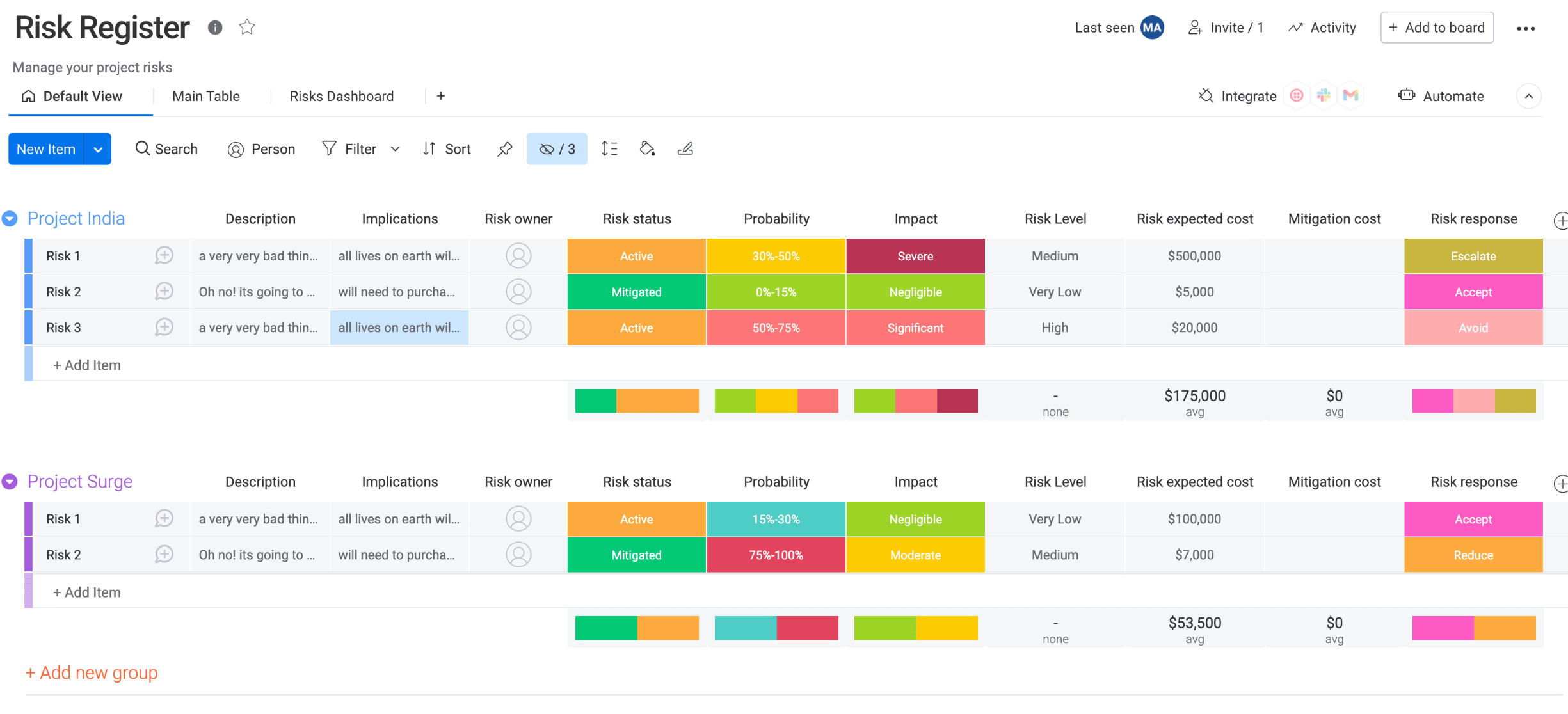
Why positive risks matter for project success
Managing positive risks transforms how teams deliver results. Instead of just protecting against failure, you actively create conditions for exceptional outcomes. Considering that only 60% of projects meet their original goals and just 51% finish on time, systematically pursuing positive risks can be the difference between average results and breakthrough performance. AI makes this shift more practical by highlighting opportunities hidden in complex project data.
Competitive advantage through opportunity management
Organizations that systematically pursue positive risks move faster than competitors stuck in defensive mode, reflecting a mindset akin to enterprise risk management. They adapt quickly to market changes and find innovative solutions others miss.
This opportunity-focused approach creates real advantages. Your team becomes more agile, more creative, and more confident in tackling ambitious goals. With customizable workflows, monday work management helps you track both threats and opportunities in one unified system, making it easier to capture these advantages.
Impact on project ROI and performance
Every positive risk you capture adds real value — whether that’s faster delivery, lower costs, or higher quality. When you accelerate timelines, reduce costs, or enhance deliverables without proportional investment increases, you’re creating pure value.
These improvements compound over time. Teams get sharper at spotting opportunities. Projects consistently exceed baseline expectations. Stakeholder confidence grows with each success.
Building innovation into risk planning
How do you shift from defensive thinking to opportunity seeking? Start by integrating positive risk identification into your standard risk management process.
Make opportunity discussions a regular part of risk reviews. Train teams to ask “what could go right?” alongside “what could go wrong?” Create workflows that prompt opportunity identification at key project milestones.
Examples of positive risks in projects
Real examples help illustrate how positive risks appear across different project types. These scenarios show the variety of opportunities that can emerge during execution, which a risk breakdown structure can help categorize effectively.
Technology and system opportunities
- Performance gains: New software runs faster than expected, enabling early completion
- Smooth integration: Systems connect more easily than planned, reducing testing time
- Cost advantages: Cloud providers offer promotional pricing that cuts infrastructure expenses
AI-powered monitoring can flag anomalies — like unusually smooth performance or cost dips — early, giving you more time to exploit them. Capturing these opportunities becomes easy with work management software thanks to automated alerts and real-time dashboards that highlight when conditions favor positive outcomes.
Resource and talent opportunities
- Early availability: Key team members free up sooner than scheduled
- Skill development: Team members learn new capabilities during the project
- Hidden expertise: Discovering relevant skills in unexpected team members
These human resource opportunities can eliminate consultant costs, improve quality, and accelerate timelines when managed effectively.
Market and timing opportunities
- Regulatory simplification: New rules reduce compliance requirements
- Competitor delays: Market gaps open up for your deliverables
- Demand increases: Customer interest exceeds projections
Monitoring external factors helps you spot and respond to these opportunities quickly, which is where scenario planning becomes invaluable.
Process improvement opportunities
- Automation potential: Identifying repetitive work that technology can handle
- Workflow optimization: Finding ways to eliminate unnecessary steps
- Best practice identification: Discovering methods that improve multiple projects
Over time, these wins build on each other: Teams get better at spotting opportunities, and projects start to consistently exceed expectations. Plus, AI process mining tools can automatically spot inefficiencies and suggest optimizations, revealing opportunities your team might not catch manually.
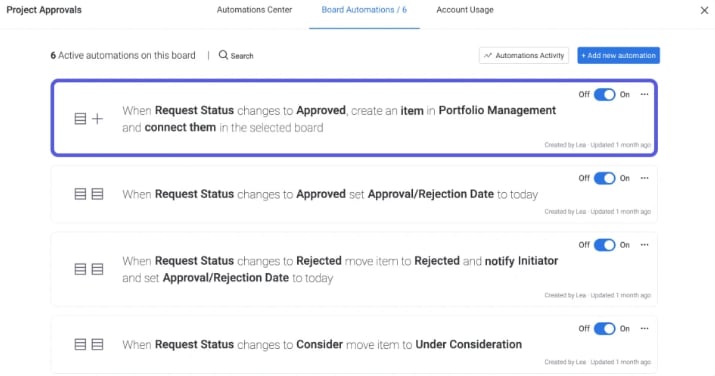
4 types of positive risks every project manager should know
Project managers should recognize 4 main categories of positive risks, in alignment with fundamental project management principles. Each type requires different monitoring and response strategies.
1. Schedule acceleration opportunities
These risks could compress your timeline through parallel processing, early resource availability, or eliminated dependencies. Look for chances to overlap activities or leverage unexpected efficiencies.
Schedule opportunities often hide in your critical path analysis. When dependencies change or resources free up early, you might shave weeks off your timeline.
2. Cost reduction opportunities
Cost-related positive risks include procurement advantages, resource optimization, or process efficiencies that reduce expenses. Focus on sustainable savings rather than one-time windfalls.
These opportunities might emerge from vendor negotiations, bulk purchasing, or discovering less expensive alternatives that maintain quality standards.
3. Scope enhancement opportunities
Sometimes you can deliver more value without proportional cost or time increases. These opportunities arise when initial work reveals possibilities for expanded functionality or improved outcomes.
Technical discoveries, user feedback, or stakeholder engagement can all create scope enhancement opportunities that increase project impact.
4. Quality improvement opportunities
Quality positive risks enable you to exceed baseline requirements through better processes, technology advantages, or team expertise. These enhancements often provide benefits long after project completion.
Process refinements, technology capabilities, or team skill development can all drive quality improvements that create lasting value.
5 strategies to maximize positive risk
Effective positive risk management requires specific strategies that increase both probability and impact of beneficial outcomes. These approaches help you actively create and capture opportunities.
1. Exploit the opportunity fully
When a high-value positive risk aligns with your objectives, dedicate resources to ensure it happens. This might mean accelerating activities, securing approvals, or reallocating team members.
Exploitation works best for opportunities with significant potential impact and reasonable probability of success. Resource planning features in monday work management let you visualize capacity and reallocate quickly, making it easier to exploit opportunities when they appear.
2. Enhance probability and impact
Enhancement focuses on making positive risks more likely to occur and more valuable when they do. Consider these enhancement tactics:
- Process improvements: Refine workflows to increase opportunity likelihood
- Capability building: Develop skills that enable better outcomes
- Stakeholder engagement: Build support for opportunity pursuit
Small investments in enhancement can yield significant returns when applied to the right opportunities. AI can model different scenarios, showing you which small investments (like training or automation) have the highest chance of increasing opportunity likelihood.
3. Share for mutual benefit
Partnering with others can make positive risks more achievable while distributing both costs and benefits. Sharing strategies work well for opportunities that require resources or expertise beyond your immediate team.
Joint ventures, vendor partnerships, or cross-functional collaboration can all enable opportunity sharing that creates win-win outcomes.
4. Accept and monitor progress
For lower-impact opportunities, accepting means acknowledging the positive risk without active pursuit. A fallback plan ensures you’re ready to act if conditions change.
This strategy prevents resource waste on marginal opportunities while keeping options open for future action.
5. Integrate into project planning
Make positive risk identification part of your standard processes. Include opportunities in risk registers, dedicate time in risk reviews, and build opportunity prompts into project templates.
Building positive risk management into your standard process keeps opportunities from slipping through the cracks, no matter the project or team.
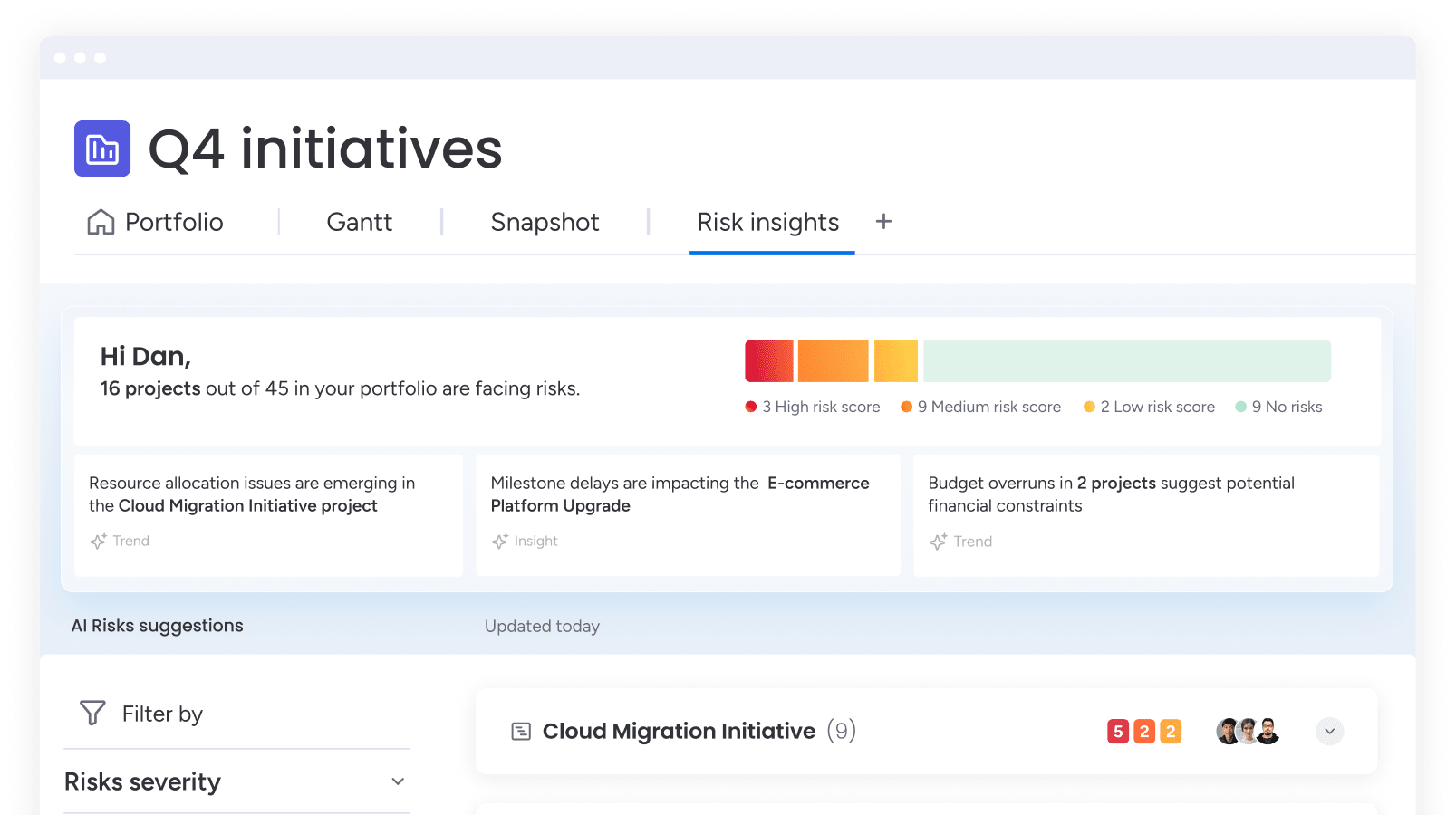
How to identify positive risks in your projects
Finding positive risks requires structured approaches that help teams recognize opportunities they might otherwise miss. These methods should become part of your regular project rhythm.
Conducting opportunity workshops
Structured brainstorming with diverse stakeholders uncovers positive risks that individuals might miss alone. Effective workshops combine creative thinking with practical assessment.
Use facilitation techniques that encourage exploration while maintaining focus on realistic possibilities. Document all ideas for evaluation and risk tracking.
Mining project data for opportunities
Historical data reveals patterns that indicate potential positive risks. Analysis of past projects shows where opportunities typically emerge and what conditions enable success.
Look for performance trends, stakeholder feedback patterns, and outcome variations that suggest opportunity potential in current work.
Creating risk identification workflows
Build systematic processes that prompt opportunity identification throughout your project lifecycle. These workflows ensure positive risk assessment happens at optimal times, not just during initial planning.
Automated triggers, regular review cycles, and team training all contribute to consistent opportunity identification.
6 steps to manage positive risk successfully
Follow this systematic process to ensure opportunities are identified, evaluated, and pursued effectively across your projects.
Step 1: Build an opportunity risk register
Create a dedicated risk register that captures all positive risk information. Include fields for description, probability, impact, owner, and response strategy.
Your register should integrate with existing risk processes while maintaining focus on opportunity-specific attributes. monday work management provides customizable templates that streamline this documentation.

Step 2: Assign dedicated risk ownership
Define who’s responsible for each positive risk. A risk owner needs authority to pursue opportunities and accountability for regular updates.
Clear ownership prevents valuable opportunities from falling through organizational cracks, especially since 92% of senior leaders believe their organization fosters shared ownership, but that number drops to 76% for individual contributors.
Step 3: Analyze probability and impact
Assess each opportunity using consistent criteria, starting with a thorough risk assessment. Consider factors affecting likelihood and quantify potential benefits in concrete terms.
This risk analysis in project management helps prioritize resource allocation toward the most valuable opportunities.
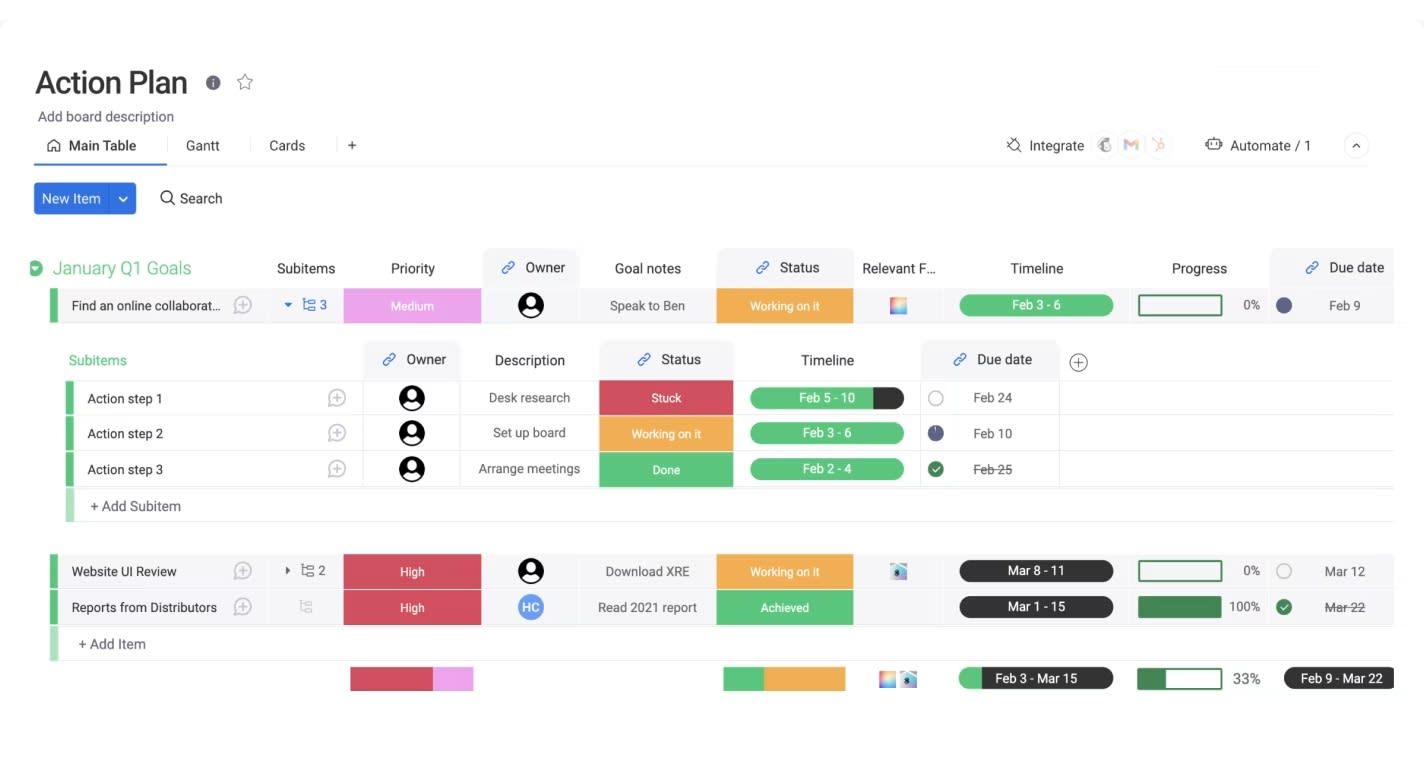
Step 4: Create response action plans
Develop detailed plans for pursuing each positive risk. Specify triggers, resources, timelines, and success metrics. Action plans should be practical and aligned with project constraints while maximizing opportunity value.
Step 5: Track and monitor progress
Continuously monitor opportunity status and response effectiveness. Use dashboards and automated alerts to maintain visibility.
Regular tracking ensures opportunities receive appropriate attention throughout the project lifecycle. AI-powered dashboards can surface anomalies in real time, alerting teams when conditions shift in favor of an opportunity.
Step 6: Document lessons learned
Capture what worked, what didn’t, and why. Share insights across your organization to build collective capability.
This knowledge transfer helps other teams recognize and pursue similar opportunities more effectively.
Transform risk management into opportunity management with monday work management
Bringing structure and visibility to positive risk management is essential for project success. A flexible platform like monday work management makes it simple to track opportunities and threats side by side within unified workflows, ensuring nothing slips through the cracks.
Customizable risk registers accommodate positive risk attributes while maintaining process consistency. Automated workflows can kick off the right actions the moment an opportunity appears, so your team can respond quickly while it still matters.
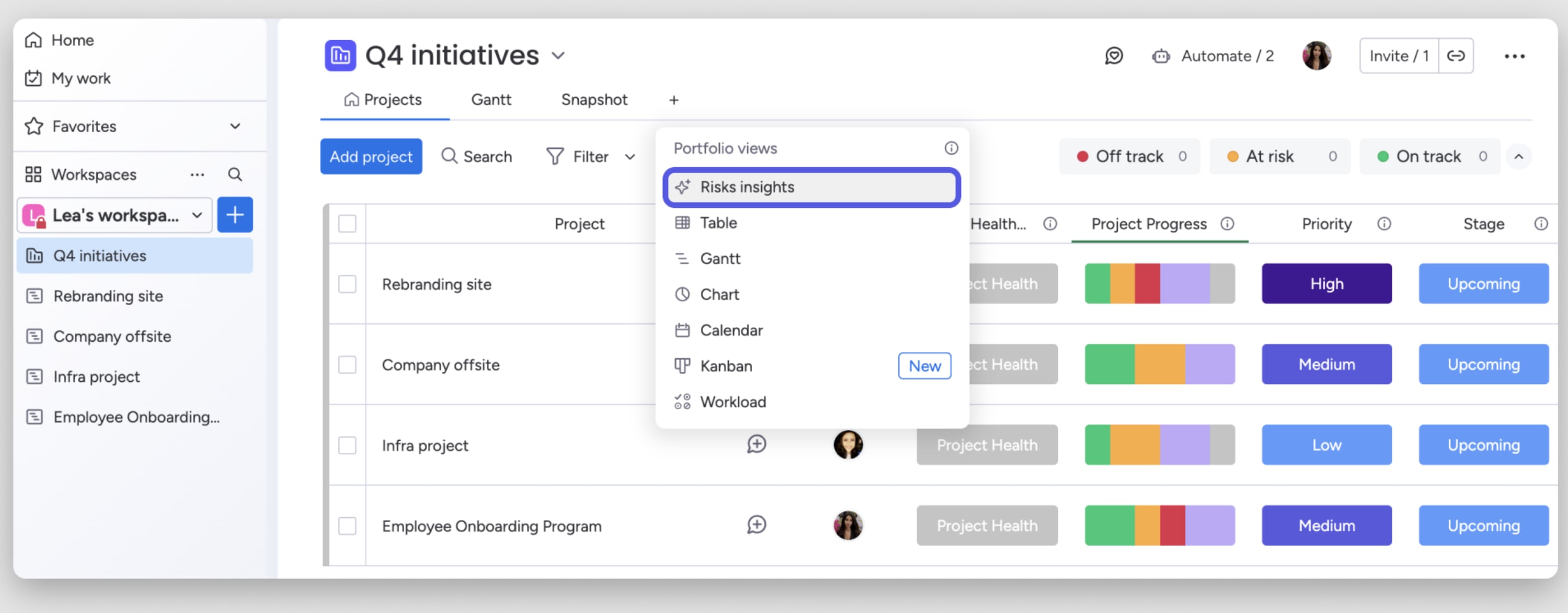
AI-powered insights help spot patterns that indicate emerging opportunities. Dashboard reporting provides real-time visibility for informed decision-making about resource allocation and strategic priorities.
Cross-functional collaboration features ensure opportunities are visible across teams and departments. This transparency prevents valuable possibilities from being overlooked due to communication gaps.
Ready to unlock your project’s full potential through systematic positive risk management? Get started today.
Try monday work managementFAQs
What are positive risk examples in project management?
Positive risk examples in project management include completing milestones ahead of schedule due to early resource availability, securing vendor discounts that reduce project costs, discovering process improvements that enhance quality, or benefiting from regulatory changes that simplify compliance requirements.
How do you include positive risks in a risk register?
Include positive risks in your risk register by creating a separate category for opportunities, using the same fields as negative risks but with opportunity-focused descriptions, assigning probability and impact ratings based on potential benefits, and documenting response strategies like exploit or enhance rather than mitigate or avoid.
Can the same event be both a positive and negative risk?
Yes, the same event can be both positive and negative, depending on context. For example, finishing early saves money (positive) but might disrupt resource plans (negative). In that case, you’d track each side separately.
What is the difference between positive risk and opportunity management?
Positive risk and opportunity management are essentially the same concept in project management, with positive risk being the formal term used in frameworks like PMI's PMBOK to describe the systematic identification and management of beneficial uncertainties that could enhance project outcomes.
How do you measure positive risk impact on projects?
Start by setting baseline metrics before you pursue the opportunity. Then, quantify the potential benefits in terms of time saved, costs reduced, scope expanded, or quality improved. As the project unfolds, track actual outcomes against those projections using dashboards and KPIs to see what value was really delivered. AI-powered reporting tools make this process easier by automatically comparing results to your original plan.
When should you exploit versus accept a positive risk?
Exploit positive risks when potential benefits significantly outweigh required investments and you have adequate resources to pursue them actively, but accept positive risks when the opportunity value is moderate or when active pursuit would divert critical resources from essential project activities.
